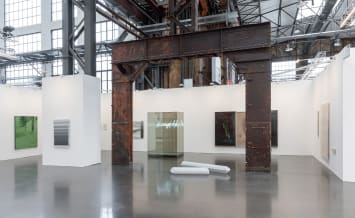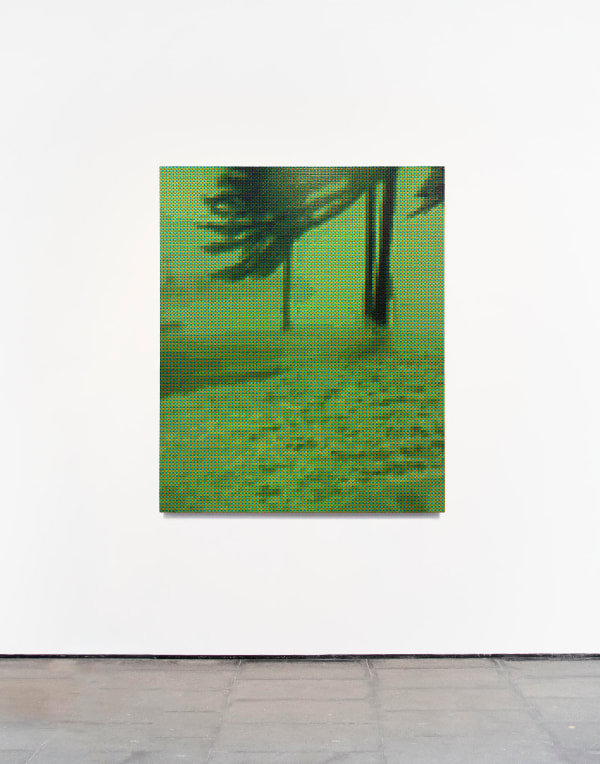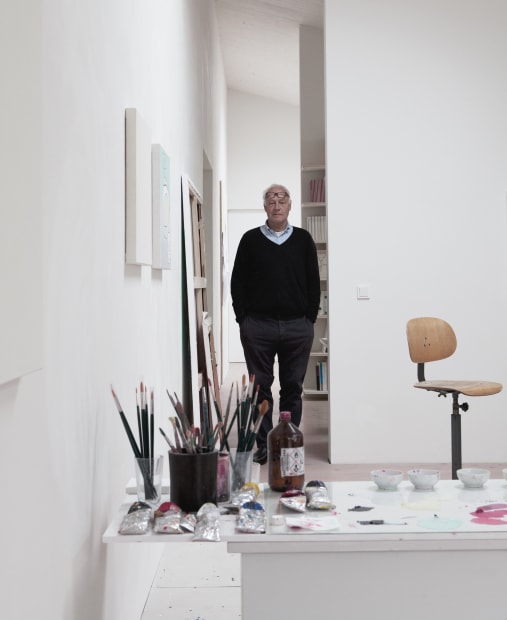max goelitz presents a dialogue between current works by Natacha Donzé, Lou Jaworski, Rindon Johnson, Brigitte Kowanz, Haroon Mirza, Jürgen Partenheimer and Troika within a multimedia installation at Art Düsseldorf 2023.
Kowanz and Troika follow a long tradition in the fine arts of utilizing scientific methods to question the transmission of information while developing powerful conceptual aesthetics. Their works explore experimental approaches to human perception and the representation of reality through coded language and algorithms. The poetically abstract oeuvres of Jürgen Partenheimer and Rindon Johnson are often based on language and are characterized by their exploration of a mental, geographical, historical, scientific and political spaces. Natacha Donzé opens up a new approach in her paintings in relation to digital references. At the same time Haroon Mirza's and Lou Jaworski's works are also characterized by technological features that unfold a mystical component and take up pop cultural references or ancient cultures. Mirza's installations including electricity, sound, light and solar panels allow for contemporary technologies to merge with environmental issues. Bringing these artistic encounters together, the booth presents a diverse reflection on contemporary issues such as digitization, language, mysticism, and climate policy.
Booth G03
Preview 30 March 2023
Fair Days 31 March – 2 April 2023
Areal Böhler
Hansaallee 321
40549 Düsseldorf
Further informations on the artist and exhibitied works can be found on the art fair viewing room.
→ visit the viewing room art düsseldorf 2023





















